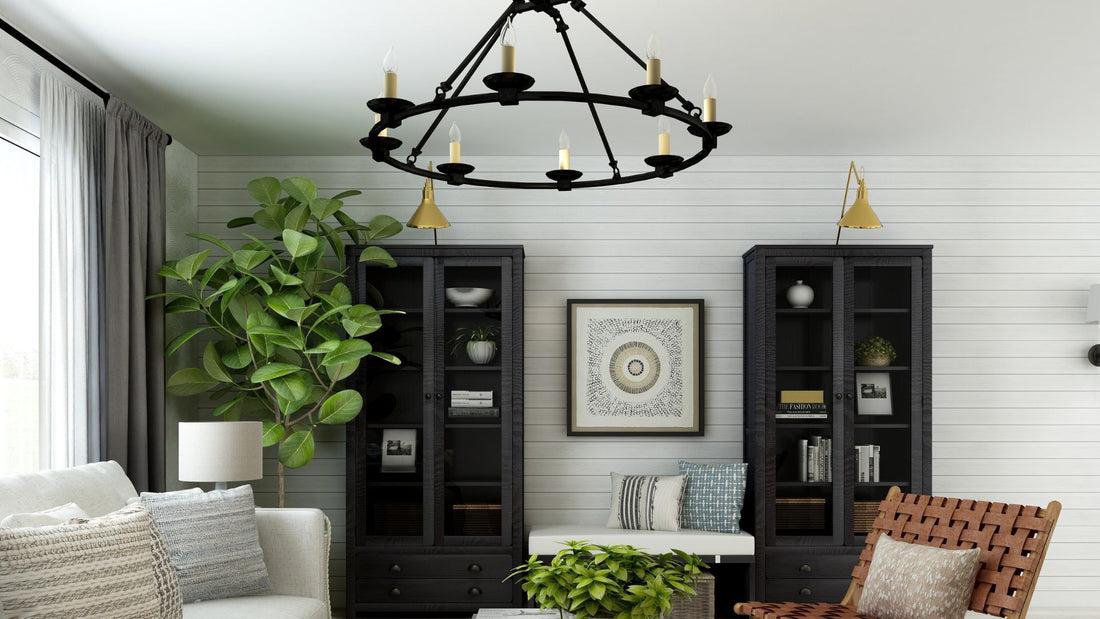Introduction:
In recent years, the "modern farmhouse" aesthetic has had a tight grip on the interior design industry. Its combination of rustic charm, clean lines, and contemporary elements has captured the imagination of homeowners and designers alike. However, as with any trend, there comes a point where saturation sets in and the appeal begins to wane. At Treacle Art we are predicting the possibility that the modern farmhouse aesthetic has reached tipping point, with signs indicating a decline in its popularity. In this article, we'll explore the factors behind this shift and the emerging design trends that are taking its place.
The Rise and Peak of the Modern Farmhouse:
The modern farmhouse aesthetic emerged as a response to the desire for a cosy and nostalgic retreat amidst the fast-paced, technology-driven world. Drawing inspiration from traditional farmhouses, it incorporated elements such as shiplap walls, barn doors, exposed beams, and vintage-inspired fixtures. This fusion of rustic and contemporary design struck a chord with homeowners seeking a balance between simplicity and modern comfort. It also catered for those in small homes, using their interiors to embody the light and space of bigger farmhouse properties.
The aesthetic skyrocketed through the influence of social media platforms like Pinterest and Instagram. Countless images and reels of impeccably styled interiors flooded these platforms, fueling the desire for the look and turning it into a widely recognized trend. Its accessibility and versatility made it appealing to homeowners across various regions and demographics.
Signs of Saturation:
Despite its initial success, there are indications that the modern farmhouse aesthetic is reaching a saturation point. As the trend gained momentum, countless home decor brands and retailers rushed to capitalise, consequently losing its authentic and innovative expression, with an abundance of farmhouse-inspired products. This dilution has negatively impacted the uniqueness and exclusivity the aesthetic once held.
Additionally, the proliferation of mass-produced, cookie-cutter homes adopting the modern farmhouse style has contributed to its decline. Many new housing developments embraced this aesthetic, leading to a sense of homogeneity that has begun to erode its charm and originality. Homeowners seeking distinctiveness and individuality are now searching for alternatives beyond the ubiquitous white walls and rustic accents.
Emerging Design Trends:
As the modern farmhouse aesthetic recedes, new design trends are starting to take its place. Here are a few notable examples:
- Modern Minimalism: Clean lines, neutral colour palettes, and a focus on simplicity. This aesthetic emphasises functionality, decluttered spaces, and the use of natural materials like wood and stone.
- Sustainable and Eco-Conscious Design: With a greater collective recognition of environmental impact, homeowners are embracing sustainable design practices. This trend sees energy-efficient appliances, eco-friendly materials, and incorporation of nature indoors through the use of plants and biophilic design principles.
- Global and Bohemian Influences: The allure of eclectic, globally-inspired decor is gaining traction. Bohemian aesthetics, with their vibrant colours, layered textures, and unique artisanal pieces, are becoming increasingly popular for those seeking a more boho-chic and personalised look.
- Mid-Century Modern: Drawing inspiration from the design movements of the mid-20th century, mid-century modern design features clean lines, organic shapes, and a blend of modern and retro elements. Its timeless appeal and functional designs are resonating with homeowners seeking a touch of nostalgia.
Conclusion:
While the modern farmhouse aesthetic enjoyed its time in the limelight, we think it appears to have reached its saturation point. The market's mass production, the rise of cookie-cutter homes, and the desire for greater individuality have all contributed to the waning popularity of this once-beloved style, as homeowners search for new ways to express themselves through their interior design choices.

